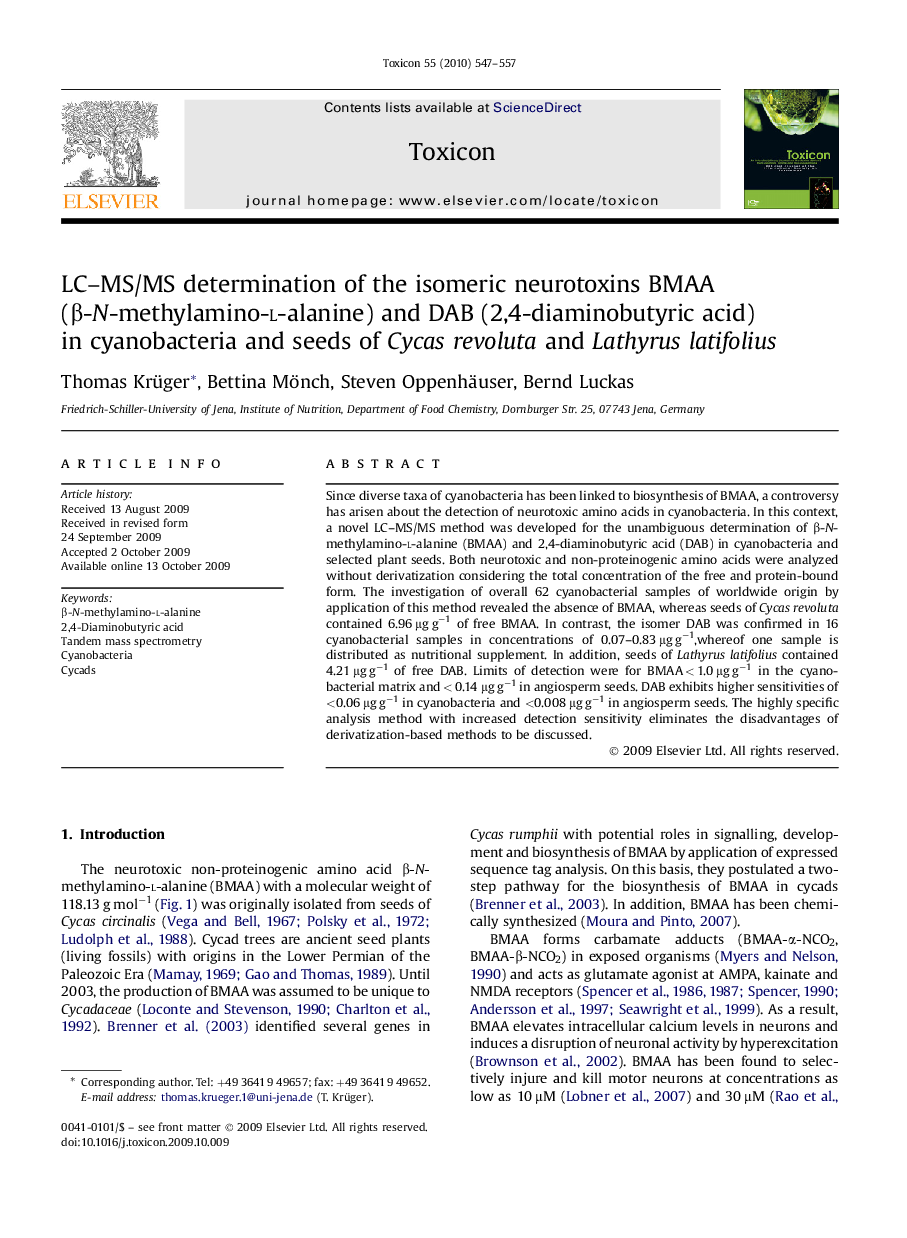| Article ID | Journal | Published Year | Pages | File Type |
|---|---|---|---|---|
| 2065354 | Toxicon | 2010 | 11 Pages |
Since diverse taxa of cyanobacteria has been linked to biosynthesis of BMAA, a controversy has arisen about the detection of neurotoxic amino acids in cyanobacteria. In this context, a novel LC–MS/MS method was developed for the unambiguous determination of β-N-methylamino-l-alanine (BMAA) and 2,4-diaminobutyric acid (DAB) in cyanobacteria and selected plant seeds. Both neurotoxic and non-proteinogenic amino acids were analyzed without derivatization considering the total concentration of the free and protein-bound form. The investigation of overall 62 cyanobacterial samples of worldwide origin by application of this method revealed the absence of BMAA, whereas seeds of Cycas revoluta contained 6.96 μg g−1 of free BMAA. In contrast, the isomer DAB was confirmed in 16 cyanobacterial samples in concentrations of 0.07–0.83 μg g−1,whereof one sample is distributed as nutritional supplement. In addition, seeds of Lathyrus latifolius contained 4.21 μg g−1 of free DAB. Limits of detection were for BMAA < 1.0 μg g−1 in the cyanobacterial matrix and < 0.14 μg g−1 in angiosperm seeds. DAB exhibits higher sensitivities of <0.06 μg g−1 in cyanobacteria and <0.008 μg g−1 in angiosperm seeds. The highly specific analysis method with increased detection sensitivity eliminates the disadvantages of derivatization-based methods to be discussed.
